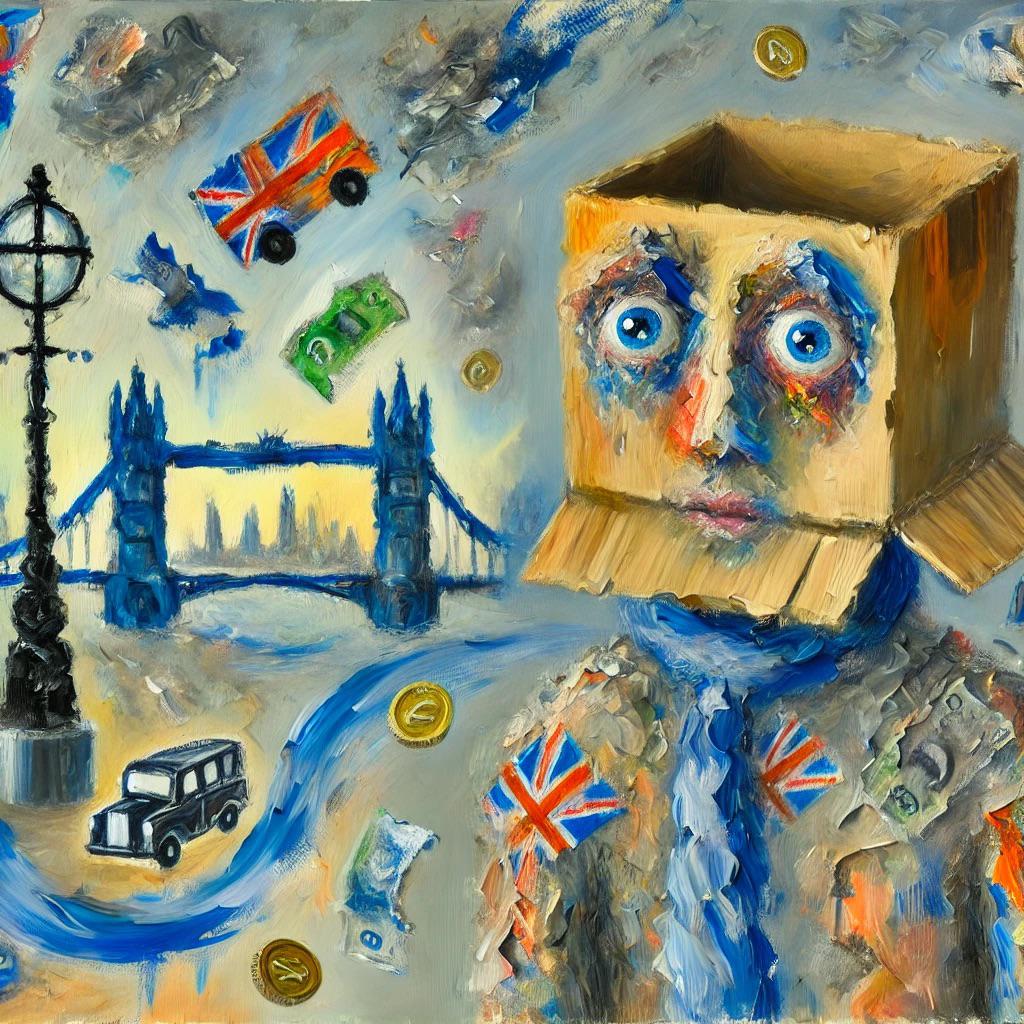
"UNBREAKABLE"
During Blockhead’s time in the mental hospital, he painted two large oil-on-canvas works, capturing his perception of a fellow inmate’s harrowing story. The inmate had escaped a nine-year hospitalization, leaping from Tower Bridge into the icy Thames at 3 a.m. on a freezing January morning—and survived. The paintings, raw and unpolished, depict a blockhead figure symbolizing the man. In the first canvas, the figure stands at the edge of the bridge, gazing into the dark, frigid waters below. The second painting shows the same blockhead figure looking back at the bridge, a quiet realization dawning: if he had survived that, he could survive anything. The loose, simplistic brushstrokes reflected Blockhead’s own shifting mental state, blending his fragility with the resilience of the story he portrayed. Together, the paintings became symbols of endurance, not just for the man’s survival, but for Blockhead’s own journey toward hope.

"Unbreakable"
During Blockhead’s time in the mental hospital, he painted two large oil-on-canvas works, capturing his perception of a fellow inmate’s harrowing story.
The inmate had escaped a nine-year hospitalization, leaping from Tower Bridge into the icy Thames at 3 a.m. on a freezing January morning—and survived.
The paintings, raw and unpolished, depict a blockhead figure symbolizing the man. In the first canvas, the figure stands at the edge of the bridge, gazing into the dark, frigid waters below. The second painting shows the same blockhead figure looking back at the bridge, a quiet realization dawning: if he had survived that, he could survive anything.
The loose, simplistic brushstrokes reflected Blockhead’s own shifting mental state, blending his fragility with the resilience of the story he portrayed. Together, the paintings became symbols of endurance, not just for the man’s survival, but for Blockhead’s own journey toward hope.

Titled "Unbreakable" Size 80cm x 100cm Oils on canvas

